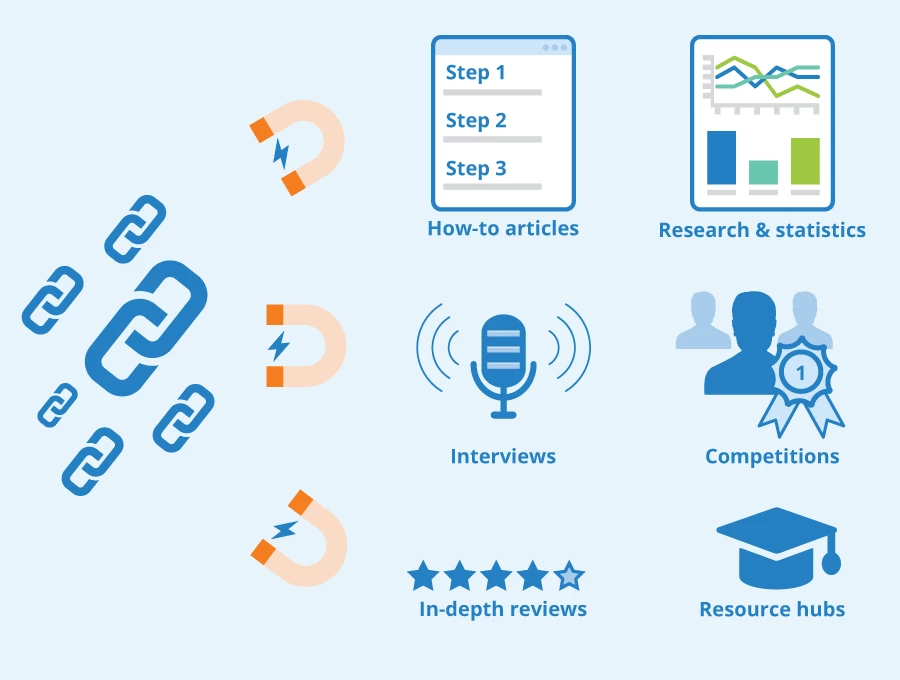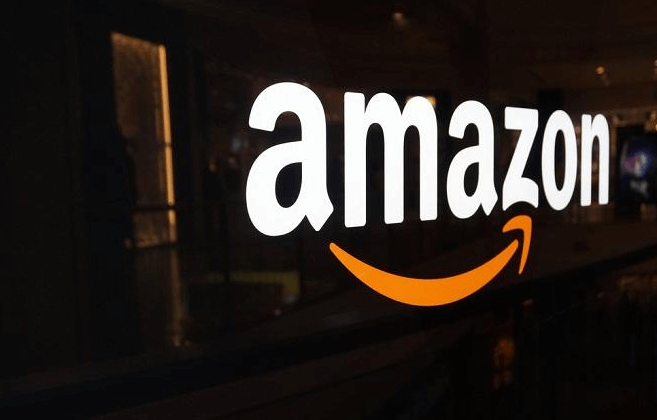Business
5 Simple Ways to Increase Your Review Generation

Review generation is an integral part of any online marketing strategy. It can help you generate more traffic, improve your SEO and boost your sales.
To increase your review generation quickly, reach out to your high-paying customers first. That way, you can maximize your ROI with fewer emails and less effort.
Ask Your Customers
Asking your customers for reviews is one of the best ways to increase your review generation. It’s a simple way to show that you appreciate the positive feedback that your customers leave, and it shows them that you take their opinions seriously.
Start by looking at your recent order data to find customers who spent a lot of money on products or services with you. These are the ones that will be most likely to write a positive review.
Next, identify the right moments in the buyer’s journey to ask for reviews. This will help you get the most from your effort.
For example, if you’re a service business that works with clients continuously, ask for reviews at major milestones, like when they make a significant breakthrough. This will help you capture actionable customer insights and build customer relationships. It also shows them that you value their feedback and are willing to take action on it. In addition, you can also use these customer reviews to evaluate your services and make improvements.
Create a Reputation Management System
Online reputation management (ORM) is crucial to any business’s marketing strategy. It enables enterprises to control their brand image and respond to negative customer feedback.
Customers will be more likely to buy from a company with positive reviews. This is an excellent way to increase your review generation and improve your business’s reputation.
The Internet is awash in online reviews. Whether on social media, review sites, or personal blogs, online reviews are essential to your business.
Creating a reputation management system that is easy to use and helps you track the online reviews being posted about your business is essential to increase your review generation.
A good reputation management platform will help you generate reviews on all the essential sites and manage them in one place. They also allow you to respond to online reviews in real-time.
The key to increasing your online reputation is to be transparent, honest, and open about the experiences your customers have had with your business. By doing this, you demonstrate that you are committed to the community of consumers and willing to make changes and improvements to your products and services.
Ask Your Customers at the Right Time
The timing of your review request can significantly impact your ability to get positive reviews. If you ask for reviews too soon after customers make a purchase, they may ignore it and never submit a review.
Instead, it would help if you waited a few days after receiving their product or completing the service so the customer could use it. This will give them time to form opinions and provide feedback, boosting your review generation.
Sometimes, this can also mean asking your customers for feedback in person instead of by email or text. In these cases, you should be able to give them a hard-copy list of prompt questions and ask them directly what was unique about their experience.
In addition, you should always ask your customers for feedback when it’s easiest for them to leave a review. This can include when they finish a product or purchase or after they’ve spoken with a customer support representative.
Make it Easy for Your Customers to Leave a Review.
If you can make it easy for your customers to leave a review, it’s much more likely that they will do so. One way to do this is to provide them with a simple review form they can fill out.
Another way is to include reviews as a feature on your ecommerce site. You can also train your employees to ask customers for reviews in person or on the phone. This more personal approach shows they value their feedback and appreciate it when it comes in.
However, timing is critical when it comes to asking for customer reviews. Ideally, it would be best if you waited a few days after the end of their experience to give them time to think about it and make an informed decision.
Reward Your Customers
Creating a positive experience with your brand will help your customers feel appreciated and make them more likely to leave a review. Consider offering incentives to encourage customers to share their experiences online.
Rewarding your customers will also help increase your review generation and foster long-term relationships with them. This can be achieved with various tactics, including sign-up bonuses or points earned for purchasing.
You can also feature a customer of the week or month, showing their loyalty to your business. This helps them feel recognized and motivated to return.
Making the process easy and personal when requesting reviews at scale is essential. Leverage a tool that lets your customers submit photos and videos, authenticate them, and display them on your product pages. This will give other shoppers a real-life look into your products and make them more likely to buy.

Business
5starsstocks com: Your Gateway to Smart Stock Trading

Investing in stocks has become more accessible than ever, thanks to platforms like 5starsstocks.com. Whether you’re a seasoned trader or a novice investor, this platform offers a robust set of tools and resources to help you make informed decisions. In an age where the financial markets are at your fingertips, knowing how to utilize a trusted platform can be the key to financial success.
This detailed guide will walk you through the features, benefits, and strategies associated with 5starsstocks.com, helping you maximize your trading experience.
What Is 5starsstocks com?
5starsstocks com is an online trading platform designed to simplify stock investments. It combines advanced tools with user-friendly interfaces, enabling traders to monitor markets, analyze trends, and execute trades seamlessly. From real-time data to expert insights, the platform equips investors with everything needed to navigate the complex world of stock trading.
Why Choose 5starsstocks com?
When it comes to online trading, not all platforms are created equal. Here’s why 5starsstockscom is a preferred choice among traders:
- User-Friendly Interface: Accessible for beginners and professionals alike.
- Real-Time Market Updates: Stay informed with live data and stock prices.
- Comprehensive Analysis Tools: Evaluate stocks with charts, trends, and financial ratios.
- Educational Resources: Learn through webinars, tutorials, and blogs.
- Robust Security Measures: Protect your investments with top-tier encryption.
- Diverse Asset Options: Trade stocks, ETFs, options, and more.
Key Features of 5starsstocks com
1. Real-Time Stock Monitoring
Track live stock prices, indices, and market movements effortlessly. The platform ensures that traders never miss an opportunity.
2. Advanced Analytical Tools
Leverage tools such as candlestick charts, moving averages, and sector performance comparisons for deeper insights.
3. Customizable Dashboard
Personalize your trading experience by customizing your dashboard with preferred widgets and stock watchlists.
4. Educational Resources
Learn investment strategies and trading fundamentals through comprehensive tutorials, blog posts, and webinars.
5. Secure Transactions
With encryption and two-factor authentication, 5starsstocks com prioritizes your financial safety.
How to Get Started with 5starsstocks com
Follow these steps to set up your trading account and start investing:
- Create an Account: Register with your email and complete identity verification.
- Fund Your Wallet: Deposit funds using secure payment gateways.
- Explore the Dashboard: Familiarize yourself with the tools and features.
- Choose Your Stocks: Use filters and search options to find potential investments.
- Execute Trades: Place buy or sell orders directly through the platform.
Benefits of Using 5starsstocks com
Trading on 5starsstockscom offers several advantages, including:
1. Accessibility
The platform is available on multiple devices, including desktops, tablets, and mobile phones.
2. Efficiency
Real-time data and instant order executions save valuable time for traders.
3. Diversification
Trade a variety of assets like stocks, options, and exchange-traded funds (ETFs).
4. Community Support
Engage with fellow traders through forums and social features for shared learning experiences.
Top Strategies for Trading on 5starsstocks com
To make the most of your trading experience, follow these tried-and-tested strategies:
1. Start Small
Begin with a modest investment to understand the platform and its dynamics.
2. Diversify Your Portfolio
Invest in different sectors to minimize risks and capitalize on opportunities.
3. Stay Informed
Use market news, expert opinions, and trend analysis to guide your decisions.
4. Set Stop-Loss Orders
Protect your capital by limiting losses on trades with stop-loss orders.
5. Monitor Performance
Regularly review your portfolio’s performance and adjust your strategy as needed.
Top Features That Traders Love
- Live Price Alerts: Stay updated with customizable notifications.
- Intuitive User Interface: Navigate seamlessly with a well-organized dashboard.
- 24/7 Support: Access technical assistance whenever you need it.
Common Mistakes to Avoid
While trading on 5starsstocks com, avoid these pitfalls:
- Investing without research
- Over-leveraging trades
- Ignoring market trends
- Letting emotions drive decisions
Pros and Cons of 5starsstocks com
Pros
- Comprehensive tools for analysis
- Beginner-friendly tutorials and resources
- Secure and reliable payment options
Cons
- Limited availability in certain regions
- Trading fees apply to transactions
Conclusion
5starsstocks com is a reliable and efficient platform for anyone interested in stock trading. With its intuitive design, advanced tools, and educational resources, it caters to traders of all experience levels. Whether you aim to diversify your portfolio or learn the nuances of stock trading, this platform provides the support and features you need to succeed.
Start your journey with 5starsstocks.com today and unlock the potential of smart investments!
FAQs
What is 5starsstocks com?
5starsstocks.com is an online platform offering tools and resources for stock trading and investment analysis.
Is 5starsstocks com suitable for beginners?
Yes, its user-friendly interface and educational resources make it ideal for new traders.
Can I trade on mobile devices?
Yes, the platform supports mobile trading through its responsive website or app.
What types of assets can I trade on 5starsstocks.com?
You can trade stocks, ETFs, options, and other financial instruments.
How secure is 5starsstocks com?
The platform employs encryption and two-factor authentication to ensure secure transactions.
Does 5starsstocks.com charge trading fees?
Yes, minimal fees are charged for transactions. Details are available on their pricing page.
Business
5 Success Stories from Leading Logistics Marketing Agencies

In today’s rapidly evolving marketplace, logistics marketing agencies play a crucial role in bridging the gap between supply chain efficiency and customer engagement. These specialized firms leverage a deep understanding of the logistics sector, utilizing innovative strategies to help companies maximize their reach and drive growth. Here, with the increasing complexity of global trade, the demand for adept marketing tailored specifically to the logistics industry has surged here today’s rapidly evolving marketplace, logistics marketing agencies play a crucial role in bridging the gap between supply chain efficiency and customer engagement. These specialized firms leverage a deep understanding of the logistics sector, utilizing innovative strategies to help companies maximize their reach and drive growth. Here, with the increasing complexity of global trade, the demand for adept marketing tailored specifically to the logistics industry has surged.
These agencies are not just about promoting services; they are data-driven, crafting campaigns that resonate with target audiences while enhancing brand visibility. From search engine optimization (SEO) to targeted digital advertising, they employ a range of techniques to ensure that logistics companies stand out in a crowded marketplace.
As we delve into the success stories of various logistics marketing agencies, we will uncover how they have transformed their clients’ operations, enhanced their online presence, and ultimately driven significant business outcomes. By showcasing these achievements, we aim to highlight the invaluable role logistics marketing agencies play in the modern business landscape, making them indispensable partners for companies striving to thrive in this competitive environment.
Importance of Marketing in the Logistics Industry
In the increasingly competitive logistics industry, effective marketing is not just a luxury — it’s a necessity. The nuances of this sector demand a strategic approach that combines traditional marketing techniques with advanced digital strategies. As logistics firms strive to differentiate themselves, marketing becomes the driving force behind brand recognition and customer loyalty.
One of the primary roles of marketing in logistics is to educate potential clients about the complexities and benefits of various services. With rapid technological advancements and shifting consumer expectations, agencies that effectively communicate their value propositions can capture market share and establish trust.
Moreover, targeted marketing campaigns help logistics companies to reach niche markets and tailor their offerings accordingly. By leveraging data analytics, agencies can identify customer pain points and provide solutions that resonate with specific audiences.
Finally, a strong marketing presence enhances a company’s reputation in an industry often plagued by misconceptions. By showcasing success stories and transparent operations, logistics firms can build credibility and foster long-term relationships. In essence, marketing is not merely an add-on; it’s the backbone of growth and sustainability in the logistics landscape.
Overview of Success Stories
In the ever-evolving landscape of logistics, marketing agencies have emerged as pivotal players, transforming how companies connect with their audiences. These success stories highlight innovative strategies that have led to remarkable growth and brand recognition, with the specific agencies involved remaining undisclosed due to NDA agreements.
One standout example involves a mid-sized freight company that, with the help of a specialized marketing agency, revamped its digital presence. By implementing a targeted SEO strategy and launching engaging content campaigns, they saw a 150% increase in organic traffic within six months.
Another success story features a logistics startup that harnessed the power of social media advertising. Through compelling visuals and customer testimonials crafted by their marketing partner, they not only amplified their brand visibility but also achieved a 300% increase in lead generation within a year.
Additionally, a renowned global shipping firm collaborated with a marketing agency to enhance customer engagement through personalized email campaigns. The result? An impressive 45% boost in customer retention rates.
These narratives illustrate the profound impact that strategic marketing initiatives can have on logistics businesses, driving growth, fostering innovation, and ultimately reshaping the industry landscape.
Case Study 1: Innovative Strategies from Agency A

Agency A has redefined success in the logistics marketing arena through a blend of innovative strategies that cater specifically to the unique challenges of the industry. One standout initiative involved a comprehensive digital transformation project for a mid-sized freight company struggling with visibility and market penetration.
Recognizing the importance of data-driven decisions, Agency A implemented advanced analytics tools to assess customer behavior and identify key pain points. This insight laid the groundwork for a targeted content marketing strategy that included informative blogs, engaging videos, and interactive webinars, tailored to educate potential clients on industry trends and best practices.
To complement this content strategy, Agency A leveraged social media platforms, creating a robust online presence that allowed the client to connect directly with their target audience. A series of compelling case studies showcasing successful logistics solutions further established the client as a thought leader in the space.
The results were impressive: within six months, website traffic surged by 150%, and lead generation doubled. Agency A’s innovative approach not only improved brand visibility but also fostered lasting relationships, proving that thoughtful marketing can transform logistics businesses in a competitive landscape.
Case Study 2: Transformative Campaigns by Agency B
Agency B, a trailblazer in logistics marketing, recently executed a transformative campaign for a mid-sized freight company struggling to stand out in a saturated market. The agency initiated a thorough market analysis, identifying key pain points within the target audience — specifically, the need for transparency and reliability during shipment processes.
With insights in hand, Agency B crafted a multi-platform strategy that prominently featured customer testimonials and real-time tracking features. They launched an engaging social media campaign showcasing behind-the-scenes operations, which humanized the brand and built trust with potential clients. The campaign’s centerpiece was an interactive website redesign that emphasized user experience, allowing clients to easily access shipment status and logistics updates.
The results were remarkable. Within six months, the freight company saw a 40% increase in website traffic and a 25% boost in lead generation. Most impressively, customer retention rates improved significantly, as clients felt more connected and informed throughout the shipping journey. Agency B’s innovative approach not only transformed the freight company’s brand image but also set a new standard for customer engagement in the logistics sector, demonstrating the power of targeted, transparent marketing.
Case Study 3: Data-Driven Success from Agency C
- Increased Website Traffic: A 150% surge in monthly visitors due to optimized SEO and strategic content marketing.
- Lead Generation: The campaign generated a 200% increase in qualified leads within just three months.
- Conversion Rates: The brokerage saw a 35% rise in conversion rates, directly linking data-driven personalization to successful customer engagement.
- Cost Efficiency: By reallocating budget to high-performing channels identified through analytics, the client reduced their customer acquisition cost by 25%.
- This case exemplifies how Agency C’s data-driven methodologies not only foster growth but also empower logistics companies to make informed decisions that drive long-term success.
Case Study 4: Creative Branding by Agency D
Agency D took a bold step in redefining its client’s brand identity, which was struggling to resonate in an increasingly competitive logistics market. The agency embarked on a comprehensive rebranding campaign that highlighted the company’s commitment to sustainability and innovation.
Through meticulous market research, Agency D discovered that their client’s target audience was particularly passionate about eco-friendly practices. Leveraging this insight, they crafted a striking new logo and a vibrant visual identity that incorporated green elements and modern typography. The campaign’s centerpiece was a digital storytelling initiative, showcasing the logistics company’s journey toward sustainability through engaging video content and infographics.
This multifaceted approach not only revamped the brand’s image but also created a community around its values. The result? A remarkable 40% increase in brand engagement on social media platforms and a 30% rise in customer inquiries within just six months. Agency D’s creative branding efforts not only repositioned the client as a leader in sustainable logistics but also fostered lasting connections with environmentally-conscious consumers. This case highlights how innovative branding can transform perceptions and drive tangible results in the logistics sector.
Case Study 5: Technology Integration by Agency E
In an era where technology dictates market dynamics, Agency E has revolutionized logistics marketing through strategic technology integration. By leveraging advanced analytics and AI-driven insights, Agency E transformed a traditional freight brokerage into a tech-savvy logistics powerhouse.
The agency embarked on a comprehensive data-driven campaign that incorporated machine learning algorithms to predict shipping trends and optimize routes. This not only enhanced operational efficiency but also significantly reduced costs for their clients. By integrating a user-friendly digital platform, they provided real-time tracking capabilities, allowing customers to monitor their shipments with unparalleled transparency.
Additionally, Agency E implemented a customer relationship management (CRM) system tailored to the logistics sector, enabling personalized communication and targeted marketing strategies. This integration led to a 40% increase in customer engagement and a dramatic rise in repeat business.
The success of this initiative is reflected in the agency’s remarkable 30% growth in revenue over just one year. By marrying logistics with cutting-edge technology, Agency E has set a benchmark for the industry, proving that innovation is key to thriving in a competitive landscape. Their story serves as an inspiration for other logistics marketing agencies looking to harness the power of technology for success.
Key Takeaways from the Success Stories

The success stories from leading logistics marketing agencies reveal several key takeaways that can inspire others in the industry. First and foremost, the importance of data-driven decision-making stands out. Agencies that leverage analytics to tailor their strategies consistently outperform those that rely on intuition alone. This data-centric approach not only enhances targeting but also improves ROI.
Additionally, effective storytelling plays a crucial role in connecting with clients. Agencies that have mastered the art of narrative can vividly convey their brand’s value proposition, fostering trust and engagement. This emotional connection often translates into long-term client relationships.
Moreover, the adaptability of these agencies in the face of market changes highlights the need for agility. Those that pivot quickly in response to evolving consumer demands or technological advancements are better positioned for sustained success.
Lastly, collaboration emerges as a vital theme. Successful agencies prioritize partnerships, whether with tech firms for innovative solutions or with clients to co-create marketing strategies. This collaborative spirit not only enriches campaigns but also ensures they resonate deeply with target audiences, securing loyalty in an increasingly competitive landscape.
Conclusion and Future Trends in Logistics Marketing
As we reflect on the remarkable success stories from leading logistics marketing agencies, it’s clear that innovation and adaptability have been the cornerstones of their achievements. These agencies have not only enhanced their clients’ visibility but also transformed traditional logistics marketing into a dynamic, data-driven endeavor.
Looking ahead, we can anticipate several key trends shaping the future of logistics marketing. First, the integration of artificial intelligence and machine learning will allow for hyper-personalized marketing strategies, enabling agencies to tailor campaigns that resonate deeply with target audiences. Additionally, the rise of sustainability in logistics will prompt marketers to emphasize eco-friendly practices, appealing to environmentally conscious consumers.
Furthermore, omnichannel marketing will become increasingly vital, as businesses strive to create seamless experiences across various platforms. This approach will require agencies to harness analytics to track customer interactions and preferences effectively.
Lastly, the growing significance of real-time tracking and transparency in logistics services will demand innovative storytelling techniques, allowing brands to showcase their efficiency and reliability. As these trends unfold, logistics marketing agencies are poised to lead the charge, driving growth and reinforcing the vital role of logistics in the global economy.
Business
Amazon Courtesy Credit: Understanding and Utilizing It

Amazon courtesy credit, the e-commerce giant, is known for its customer-centric approach and commitment to ensuring a satisfactory shopping experience for its users. One of the ways Amazon achieves this is through its CC policy, aimed at compensating customers for certain inconveniences or issues encountered during their shopping journey.
What is Amazon Courtesy Credit?
Amazon Courtesy Credit (ACC) is a form of compensation provided to customers in recognition of various issues or inconveniences they may experience while shopping on the platform. It serves as a gesture of goodwill from Amazon to maintain customer satisfaction and loyalty.
Instances Eligible for Amazon Courtesy Credit
Late Deliveries
Customers may be eligible for ACC if their orders are delivered later than the estimated delivery date provided at the time of purchase.
Damaged or Defective Items
In cases where items arrive damaged or defective, customers can request ACC as a form of compensation for the inconvenience caused.
Inaccurate Product Descriptions
If customers receive items that do not match the product descriptions or specifications listed on the this website, they may qualify for ACC.
How to Request Amazon Courtesy Credit
Customers can request ACC by contacting Amazon customer support and providing details about the issue they encountered. Amazon representatives will assess the situation and determine if compensation is warranted.
Factors Affecting Amazon Courtesy Credit
Customer History and Engagement
Amazon may take into account a customer’s purchase history, order frequency, and overall engagement with the platform when determining eligibility for ACC.
Order Frequency
Frequent and loyal Amazon customers may receive more favorable consideration for courtesy credit compared to occasional shoppers.
Issue Severity
The severity and impact of the issue experienced by the customer also play a role in determining the amount of CC provided.
Benefits of Amazon Courtesy Credit
Amazon Courtesy Credit offers several benefits to customers, including:
- Compensation for inconvenience or dissatisfaction with the shopping experience.
- Enhanced customer satisfaction and loyalty.
- Reinforcement of Amazon’s commitment to customer service excellence.
Limitations and Considerations
While Amazon Courtesy Credit can help address certain issues encountered by customers, it’s important to note that it may not fully compensate for all inconveniences or dissatisfaction experienced during the shopping process.
Customer Experiences and Feedback
Many Amazon customers have shared their experiences and feedback regarding Amazon Courtesy Credit on various online platforms and forums. Exploring these insights can provide valuable perspectives and tips for navigating the process of requesting and utilizing courtesy credit.
Conclusion
It serves as a valuable tool for maintaining customer satisfaction and loyalty by compensating users for certain issues or inconveniences encountered during their shopping experience. By understanding the eligibility criteria and process for requesting courtesy credit, customers can leverage this benefit to enhance their overall shopping experience on Amazon.
FAQs
How do I request ACC for a late delivery?
- To request it for a late delivery, you can contact Amazon customer support through their website or app. Provide details about your order, including the order number and the estimated delivery date. Amazon representatives will assess the situation and may offer compensation in the form of CC.
What should I do if I receive a damaged or defective item from Amazon?
- If you receive a damaged or defective item from Amazon, you should contact Amazon customer support immediately to report the issue. Provide relevant details such as the order number, item description, and images showing the damage or defect. Amazon will assist you in resolving the issue and may offer CC as compensation.
Is ACC provided automatically, or do I need to request it?
- ACC is not provided automatically. You need to request it by contacting Amazon customer support and explaining the issue you encountered. Amazon representatives will evaluate your request and determine if CC is warranted based on their policies and guidelines.
Can I use ACC for future purchases on the platform?
- Yes, ACC can typically be used for future purchases on the Amazon platform. Once credited to your account, CC can be applied towards the payment of eligible items during checkout. However, it’s essential to check the terms and conditions associated with the Courtesy Credit for any specific limitations or restrictions.
Are there any restrictions or limitations on the use of ACC?
- While It can generally be used for purchases on the platform, there may be certain restrictions or limitations depending on the terms and conditions associated with the credit. For example, Courtesy Credit may have an expiration date or be limited to specific categories of products. It’s advisable to review the terms carefully to understand any restrictions before using the Courtesy Credit.

 Others2 years ago
Others2 years agoDavid T Bolno: Why Giving Back To The Community Is So Crucial

 Travel2 years ago
Travel2 years agoPractical And Essential Car Interior Accessories To Add Comfort And Convenience To Your Drive

 Travel2 years ago
Travel2 years agoBusiness Visa for CANADA

 Fashion2 years ago
Fashion2 years agoTips For Choosing The Right For Engagement Diamond Rings

 Tech2 years ago
Tech2 years agoThe Best Way to Never Get Lost: Buy Wayfinding Signs!

 Business2 years ago
Business2 years agoTop Reasons Why you Need to Consider Outsourcing Real Estate Photo Editing

 Business2 years ago
Business2 years agoDead And Co Setlist What They Played At The Gorge Amphitheatre

 Travel1 year ago
Travel1 year agoExploring the Best Places with myfavouriteplaces.org:// blog